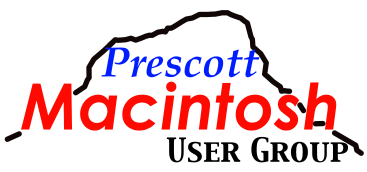John Carter writes, "The easiest way to speed up your Mac is to replace your existing hard drive with a solid state hard drive, but it’s not the least expensive way by far. Check out the video on the OWC Mercury Extreme Pro here."The best way to speed up the boot up time and the time to launch an application on the Mac is to install a solid state drive. The new MacBook Air is an example of this. "Another way to speed up your Mac is to attach an external hard drive and reconfigure your swap space (aka Virtual Memory) to use that external hard drive instead of the internal hard drive. There are two ways to do this: 1) the easy, costly way, and 2) the complicated, free way. "(For a quick review of the advantages of moving the swap space to another drive or partition, look here. NOTICE: SwapSwapVM is now available for Yosemite.) "The free way is NOT recommended as it involves using Terminal commands. Mistakes in entering the commands could prove fatal to the Mac. Take a look at two such procedures here and here. These articles are provided to give you some background on why you would want to move your swap space away from the primary boot disk on your Mac. "The costly way is only $34.99, and it comes packaged as part of MacTuneUp from MacWare (for Mac OS X 10.3.9, 10.4 or higher). See John Carter’s review on this software here. This is also the safest way. You can use MacTuneUp to move the swap space to another physical hard drive or to a separate partition on the existing hard drive. (MacTuneUp cannot repartition a hard drive.) "Re-partioning the primary hard drive to put the swap space in a separate partition is not as effective as moving the swap space to a separate physical drive, but is still a viable way to improve the performance of your system. There are few software applications that will safely repartition the primary hard drive without erasing all the data on it. One such application is VolumeWorks. Instructions for manually re-partitioning the primary drive that also destroys all data on it can be found here. Don’t worry. If you follow the instructions carefully, your system will be restored to what it was before you re-partitioned the drive, especially if you use Time Machine to restore from. If the primary hard drive is to be repartitioned for the purpose of moving the swap space to a different partition, that swap space partition should be the first partition on the drive. "For a more efficient usage of swap space, the partition that the swap space is on should not be used for any other purpose. The recommended size for swap space is at least 3 times the size of your internal memory (RAM). This means that the swap space partition can be very small, but probably should not be smaller than, say, 20GB for a system with 4GB RAM. "Finally, you can use a flash drive for your swap space, but that flash drive, if used like this, can NEVER be removed from your system. For a system with 4GB RAM, you would need a 16GB flash drive. That flash drive can be any kind, but the best kind would be a Class 10 SDHC. "All that said, there is one, simple way to improve the access time to any file on your Mac, and that is to change the preferences setting to NOT put the hard drives to sleep when possible. If the hard drives are spinned down, it takes time to get them up to speed before you can access any file on that drive. Even if you move your swap space to an external drive, if your hard drives are spinned down when they need to be accessed, your Mac will be slow. You change the settings for this in System Preferences —> Energy Saver. The figure below shows the preferred settings when the system is on Power.
"The Wake for network access is only needed if your Mac is serving a website or if you are sharing files on your Mac with other computers in your home. "If you’re using a laptop in battery mode (or an iMac in UPS mode), you really should be putting the hard disk to sleep when possible. The figure below shows the settings for this.
"It would be nice if Apple provided a way to spin down selected drives, such as the one used for Time Machine, and leave the others running." John concludes with, "(The images above are for Snow Leopard settings on an iMac.)"
